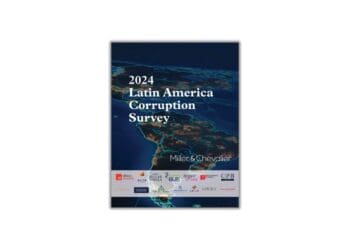Mitigating the Risk Posed by Introducers
Wendy Wysong and associates at Clifford Chance write on the rise in prominence of “introducers” in Asia-Pacific countries and explain how the use of introducers can expose the organization to corruption risk. The team also discusses several recent cases that have resulted in fines and imprisonment.
with co-authors Janice Goh and Feifei Yu
Introducers have got themselves a bad name, particularly in Asia-Pacific countries. Despite prominent and usually negative references to this type of third-party agent in anti-corruption charging documents, laws/regulations and compliance programs, introducers serve a legitimate and very necessary purpose in bringing parties together to do business. The key is to ensure that legitimate business opportunities are being introduced, and not opportunities for bribery.
Introducing Introducers
In Asia-Pacific, the value of third parties who make referrals of potential customers or introductions to investment opportunities is well-recognized, even though they do not handle actual sales or orders. Introducers can provide contacts, advice and market research, enabling companies to develop business opportunities on an equal footing with local companies or more established competitors.
Introducing Risk
The compliance risk arises because, if not carefully managed, payments to introducers can be used for corrupt purposes, including paying bribes. The term “introducer fees” has arisen in so many anti-bribery cases that it seems to have taken on “code word” status such as “tea money,” “cash desk,” and “sons and daughters” hiring programs.
In Australia, continuing payments to a customer’s fleet manager by a vehicle leasing company were labelled “introducer fees” in court documents following his arrest. In the U.K., insurance brokering firms have been fined for failings in their anti-bribery and anti-corruption procedures relating to their use of overseas introducers, charging one firm even where no actual suspicious payments were found. In Singapore, a director of a waterproofing company was sentenced to 30 months’ imprisonment for giving corrupt payments to managing agents, contractors and property agents under the guise of referral fees, commissions or tokens of appreciation. And recently, the U.S. Securities and Exchange Commission fined an aircraft part manufacturer for, inter alia, providing an agent, tasked with increasing its China market, a US$2 million advance on his 4 percent success fee commission for an office expansion, although the agent “mainly arranged introductions and meetings.”
Introducing Guidance
While failing to accurately record the provision and receipt of introducer fees and hiring introducers who lack relevant professional qualifications are called out in these cases, harsh references are also made to the fee or commission paid. Yet there are no specific laws or practical guidelines offered that set forth a permissible commission range or methodology.
Chinese authorities struck down as commercial bribery commissions paid to introducers amounting to 9 to 16 percent of the value of introduced transactions, where false accounting was used and the introducers did not have relevant professional qualifications. On the other hand, U.K. regulators did not call out as excessive introducer commissions that amounted to almost 57 percent of the revenue they generated, but rather focused on the lack of controls and risk management related to those payments. Similarly, in the U.S. case mentioned above, the amount of success fee commissions, US$55 million – or between 1.75 and 4 percent of sales to Chinese airlines – was only questioned in comparison to the value of the agent’s actual services and his lack of background and expertise.
Rather than a recommended range, companies are told to consider the reasonableness of the amount under the wider context of (1) the value of the overall introduced transaction, (2) the percentage taken up by the commission, (3) whether the amount of the commission is consistent with market practice and (4) whether it is proportionate to the services rendered by the introducer/intermediary. The oft-repeated formula – 5 percent for the first million and decreasing in percentage points per million to 1 percent for all amounts over US$4 million – is not a safety range applicable to all size contracts or in all countries.
Introducing Agreements
Aside from robust due diligence of the introducer at the onset, and on an ongoing basis, to confirm the introducer’s qualifications and to identify any connections to the potential customer, contractual provisions are the best way to mitigate the risk posed by introducers. A written agreement should clearly include the introducer’s qualifications and scope of the service, including the nature of the work or transaction contemplated; the type, profile and number of clients/customers/opportunities expected; the methods to be used; and the duration of the service.
The contract should include the calculation methodology (fixed fee upon successful closing, percentage of the value of a contract or continuing payments over the life of the contract based on ongoing payments), along with reimbursement for legitimate and documented expenses.
It is, of course, critical to include anti-bribery and anti-corruption provisions so that the introducer is clearly aware that they are covered by the company’s anti-bribery and corruption policies and that no portion of the fees or commissions may be used for bribes to obtain business advantages on behalf of the company.
Despite the opprobrium heaped on introducers who “step over the line,” those who can make introductions legitimately can provide welcome support in unfamiliar markets.



 Wendy L. Wysong is a partner at
Wendy L. Wysong is a partner at 






